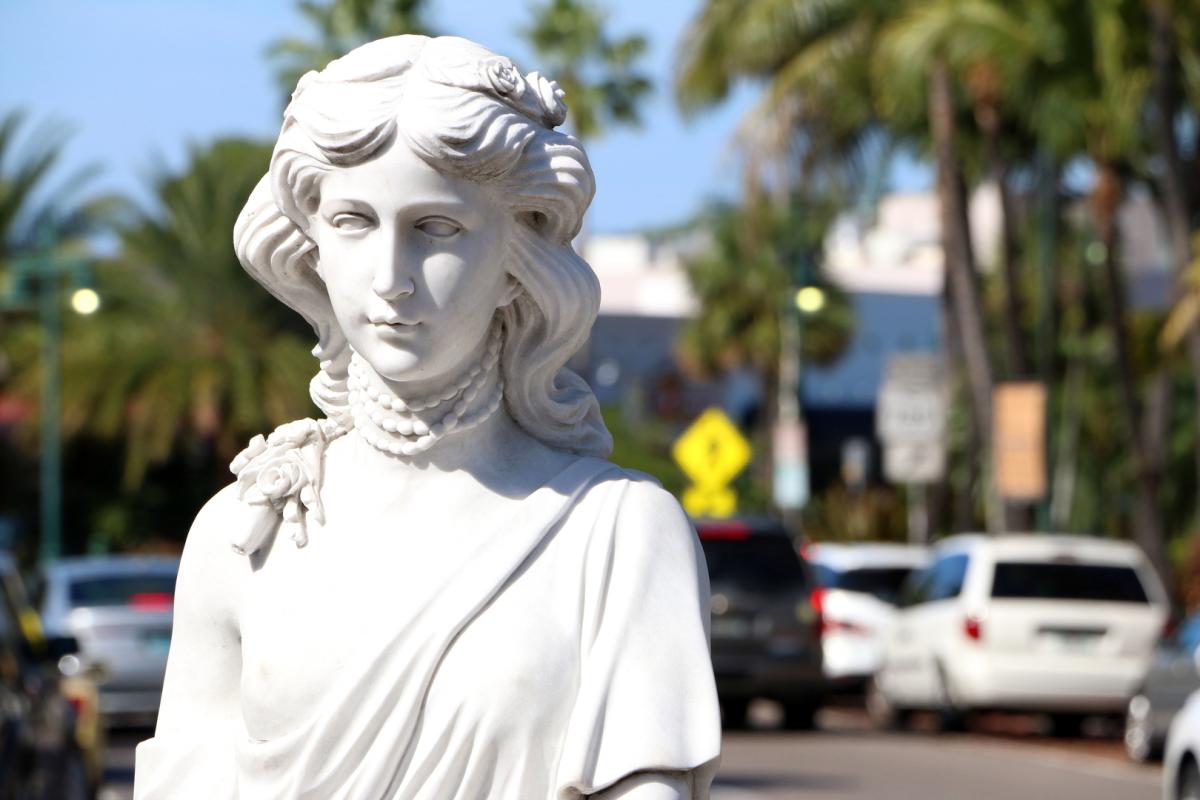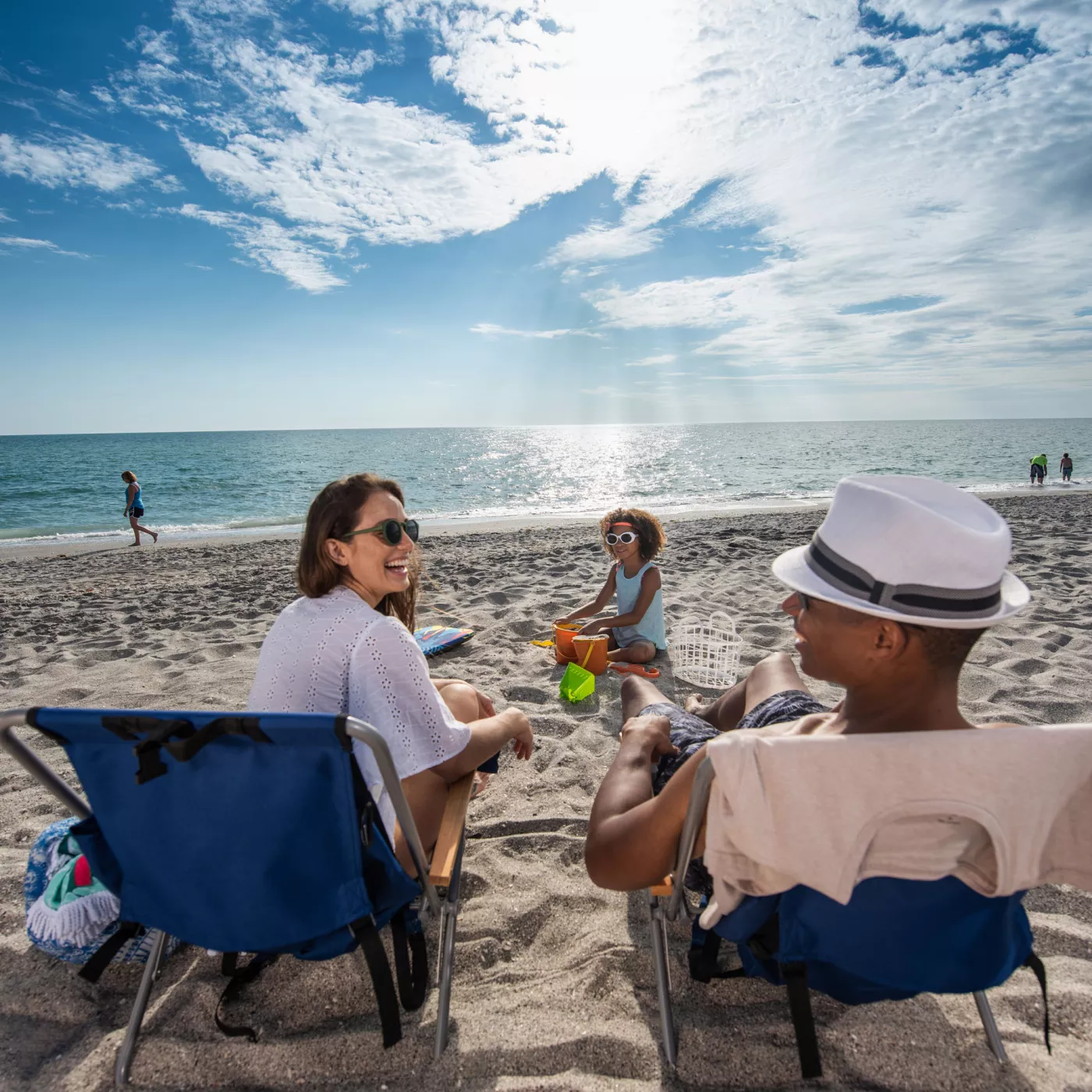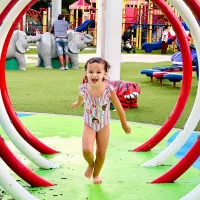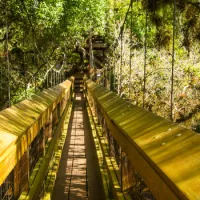How Sarasota Became a Coastal Haven for Arts & Culture
A long history of visual, performing, literary and, of course, circus arts has shaped a tiny fishing village into a cultural destination
A long history of visual, performing, literary and, of course, circus arts has shaped a tiny fishing village into a cultural destination
Sarasota possesses an indescribable energy that attracts and inspires artists. This long history of visual, performing, literary, and, of course, circus arts has shaped a tiny fishing village into a cultural gem. At the dedication of his art school in 1931, John Ringling beautifully stated, “Though life is short, art is long.” And, in Sarasota, the legacy of the arts continues to thrive.
Visual Arts
The visual arts in Sarasota are often traced back to 1841 when Captain Seth Eastman was stationed at Fort Amstead overlooking Sarasota Bay. He completed a painting that he titled Encampment of the 1st Infantry at Sarasota, Fl. This beautiful watercolor, that depicts tents under an oak tree covered with Spanish moss, is currently housed at the Peabody Museum at Harvard University.
Throughout the early part of the 20th century, Sarasota was a small fishing village, but as it began to grow in the 1910s and 1920s, so did the local art scene. In 1926, Marcia Rader was serving as the Art Supervisor of the Sarasota School System. She saw the need to bring together the local visual arts community and founded Art Center Sarasota to create a space where local visual artists could meet and exhibit their work. Art Center Sarasota continues to this day to be a vibrant part of the local visual arts community.

Throughout the 1920s John Ringling had acquired an impressive personal collection of art. He opened the John and Mable Ringling Museum of Art to the public in 1930 and soon followed that in 1931 with the creation of The School of Fine and Applied Art (now the Ringling College of Art and Design) which was housed in the museum. The creation of this school started a new wave of visual artists coming to the area.
John Ringling’s art school attracted accomplished artists to serve as instructors and promising students to the area and many of those artists stayed and continued to share their talents with the community. Art schools flourished in Sarasota during the 1950s and 1960s. These schools were founded by some of the top artists of the time, including; Jerry Farnswoth and Helen Sawyer, Bill and Marty Hartman, Syd Solomon, and Hilton Leech.
Performing Arts
As the creative energy in Sarasota grew, a group formed to create a community theater called The Players in 1929 (now known as The Players Center for Performing Arts). Although The Players is not a professional theater, the level of talent found in Sarasota has always allowed this community group to create high quality performances that wow audiences.
In 1949, the Ringling Museum’s first director, Arthur Everett "Chick" Austin Jr., purchased a small theater that was built in 1789 in Asolo, Italy. This theater was dismantled and moved to the Ringling Museum where it became the spark for the area’s local performing arts. In the 1960s, the Historic Asolo Theater became the first home to the Asolo Theatre Festival (now The Asolo Repertory Theatre) and the Asolo Opera Guild (now The Sarasota Opera).
Sarasota’s love for performing arts continued to grow and in 1969 the Van Wezel Performing Arts Hall was completed. This purple seashell shaped theater immediately became a treasured organization in Sarasota and enabled larger, traveling performances to be added to the robust local theater season.

Literary Arts
As the visual and performing artists continued to find their inspiration in Sarasota, the literary world soon followed. If you had visited Sarasota in the 1950s and 1960s, you would have been mingling with authors such as John D. MacDonald and MacKinlay Kantor. These local writers would frequently meet at what they called the Friday Lunch Bunch or the Liar’s Club to support and challenge each other.
Today, local writers continue to debut their personal works of art at independent bookstores like Bookstore1Sarasota.
Public Art
John Ringling enjoyed the outdoor sculptures that he found throughout Europe, so much so that he brought many back to Sarasota. Those sculptures not only graced the gardens of his palatial home, Ca’ d’Zan, but he also placed them around his new commerce development, St. Armands Circle. Many of those statues still stand among the popular shopping district and the strong community value in public art remains.

In the late 1960s, Jack Cartlidge, an art professor at New College of Florida, created a new sculpture technique called repoussé. By heating and hammering metal, he was able to create large, hollow sculptures that mimic solid bronze. His popular work became a favorite of local architect Jack West, and they often placed Cartlidge’s works with West’s buildings. A well-known local example of this partnership can be seen at Sarasota City Hall where Cartlidge’s piece, Nobody’s Listening, sits in front of the building designed by Jack West.
The City of Sarasota keeps a detailed record of its expanding public art collection, and you can even try a public art scavenger hunt around town.
Circus Arts
The history of the arts in Sarasota would not be complete without the circus arts. Beginning during the winter of the late 1920s, the people of Sarasota had the pleasure of listening to Merle Evans’ famous circus band in a clamshell amphitheater on the bay. Then, in 1927, John Ringling decided to move the winter quarters of the world famous Ringling Bros. and Barnum & Bailey Circus to Sarasota. This did not just provide a tourist destination for the area, it also meant that the circus artists would also discover the beauty of the area and contribute their talents to the community.

In addition to performing, countless circus artists have been trained in Sarasota. In 1949, Sailor Circus was founded to inspire and train young performers. And from 1968 to 1997 Sarasota County was home to a clown college.
Today, the Circus Arts Conservatory not only continues the legacy of the circus, but Dolly Jacobs and Pedro Reis have made history when the circus arts were recognized at the 2017 Smithsonian Folklife Festival. The circus arts have finally received the national recognition for artistry and talent that they deserve.
Although it is impossible to capture the magic of the Sarasota arts scene in this brief overview, hopefully, you have been inspired to experience it for yourself.
Compass Rose History Experiences is a local company dedicated to connecting people to the history of the Sarasota and Bradenton areas. Through stories of those who came before us, Compass Rose creates meaningful relationships with the past.

![Boat parking at The Crow’s Nest in Venice [Photo: Lauren Jackson]](/sites/default/files/styles/popular_stories_teaser/public/2023-import/The-Crow%2527s-Nest-cropped__OPT.jpg.webp?itok=ycs37M-O)


